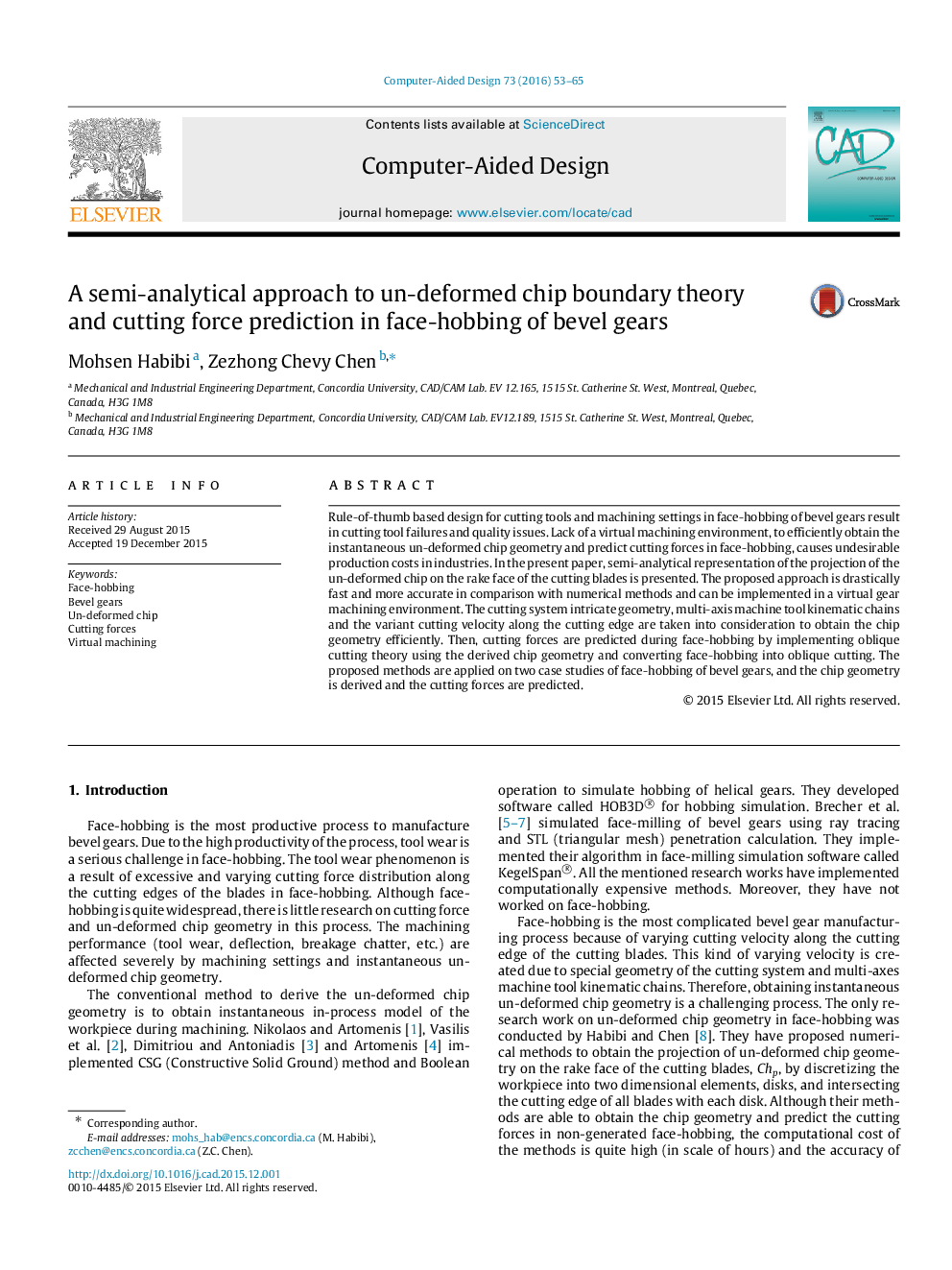| کد مقاله | کد نشریه | سال انتشار | مقاله انگلیسی | نسخه تمام متن |
|---|---|---|---|---|
| 439977 | 690929 | 2016 | 13 صفحه PDF | دانلود رایگان |
• Semi-analytical representation of the chip geometry in face-hobbing is presented.
• The method is computationally efficient and more accurate than numerical methods.
• Cutting forces in face-hobbing are predicted.
• Regions where are more prone to be worn out along the cutting edge are predicted.
Rule-of-thumb based design for cutting tools and machining settings in face-hobbing of bevel gears result in cutting tool failures and quality issues. Lack of a virtual machining environment, to efficiently obtain the instantaneous un-deformed chip geometry and predict cutting forces in face-hobbing, causes undesirable production costs in industries. In the present paper, semi-analytical representation of the projection of the un-deformed chip on the rake face of the cutting blades is presented. The proposed approach is drastically fast and more accurate in comparison with numerical methods and can be implemented in a virtual gear machining environment. The cutting system intricate geometry, multi-axis machine tool kinematic chains and the variant cutting velocity along the cutting edge are taken into consideration to obtain the chip geometry efficiently. Then, cutting forces are predicted during face-hobbing by implementing oblique cutting theory using the derived chip geometry and converting face-hobbing into oblique cutting. The proposed methods are applied on two case studies of face-hobbing of bevel gears, and the chip geometry is derived and the cutting forces are predicted.
Journal: Computer-Aided Design - Volume 73, April 2016, Pages 53–65
